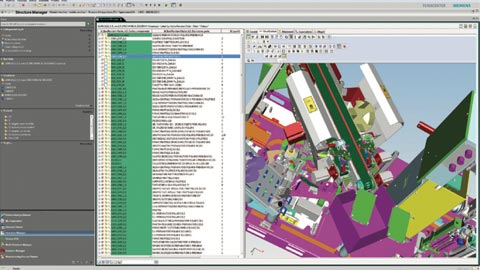Teamcenter helps Savio slash lead time
Teamcenter helps Savio slash lead time

Case Study
Teamcenter helps Savio parallelize project activities to slash lead time
Savio Macchine Tessili
Textile machinery manufacturer constantly cuts product development time by fully leveraging the adoption of Teamcenter and Solid Edge
Continuous evolution
Savio Macchine Tessili SpA (Savio) is a model of continuous evolution, with its roots going back to 1911. The company has a century-long success story, beginning with Marcello Savio’s ingenuity and then passing through different owners, from the Savio family to the Italian state company ENI, from Itema group to Alpha equity. In 2011, Alpha acquired 100 percent of the shares of the company and its subsidiaries.
As a result of these acquisitions, today the group business is divided into two major areas: Textile and Electronics & Components. In the textile business, Savio produces winders, two-for-one twisters and rotor spinning frames, and Mesdan manufactures yarn joining solutions and testing devices. In the Electronics & Components business, Loepfe supplies yarn clearers for winders and spinners, and sensors for looms and other textile devices; Eutron supplies electronic cards; BMSvision supplies production monitoring systems; and SedoTreepoint supplies dye house control systems.
Efficient organization
Savio has always been well organized, says Roberto Badiali, R&D director. “When I was employed in 1980, the company had already implemented the engineering and manufacturing processes as it is taught at the university. Back in the 1950’s, Savio had adopted the production methods of big organizations such as Olivetti, Necchi and Alfa Romeo, building up an efficient organization that later-on became a reference for several companies in our region.”
Savio’s business – design, production, sales and service of textile equipment all over the world – is highly competitive, with only two very aggressive competitors, a German firm and a Japanese company. “Winders have always been difficult to set up, both 30 years ago when the concept was basically mechanical, and now that it is a mechatronic device,” Badiali explains. “We still develop equipment that requires extensive testing and accurate setup to work 24 hours a day, in harsh, dusty, humid and hot environments, with room temperatures that can reach 35 degrees Celsius and uneven power supply with strong voltage oscillations.”
As operating machines, winders must be very versatile and easy to adjust, as they must process both very fine, thin yarn and thicker raw yarn. Savio’s machines normally have a control head connected to several identical operating units. The company manufactures approximately 120,000 units annually. These units must be sturdy, insensitive to environmental conditions and dust, easy to clean and maintain, and operable by unskilled staff. “This is why our control panels have multilingual interfaces, and most of all, lots of icons and pictures,” Badiali says.
The product development cycle starts from well-defined, basic specifications collected from different sources. Then the first design stage checks new concepts with finite element analysis (FEA), laboratory tests and other processes, and generates simulators and prototypes that are tested in the field for at least six months. Based on the results of these tests, the designs are corrected and optimized to produce a pre-series and then the final series. The modern mechatronic design allows modifications on-the-fly that were impossible 30 years ago.
Customers normally find an answer to any need in Savio’s portfolio, as well as support to define working plans, the number of units and factory layout. “Customer-specific requests have been gradually adopted in standard production, so our designers only have to develop new concepts when new requests arise,” Badiali says. “At present, 95 percent of the parts of our machines are standard. All we have to do is configure to customer requirements.”
